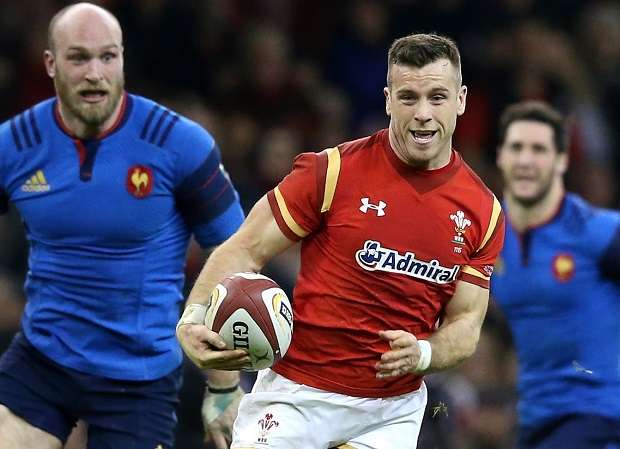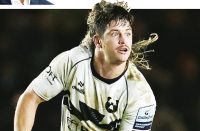 This game between England and Wales is winner-takes-all, because, whichever side win, they will almost certainly win the 2016 Six Nations Championship. There is also no doubt that Wales defence guru Shaun Edwards will come to Twickenham with a plan to shut England down, and this is where we will find out how good this England backline is at finding space.
This game between England and Wales is winner-takes-all, because, whichever side win, they will almost certainly win the 2016 Six Nations Championship. There is also no doubt that Wales defence guru Shaun Edwards will come to Twickenham with a plan to shut England down, and this is where we will find out how good this England backline is at finding space.
We will also discover how good Eddie Jones and Warren Gatland are as head coaches because it could be a kick-fest with neither side wanting to play out of their own half. The only exceptions to that are if Mike Brown or Liam Williams get the ball, because neither of them like to kick as a first option.
The first question that needs to be answered is whether England’s backline is about to change. If we’ve learned one thing about Eddie Jones it’s that most of what he has said about selection has stuck – for example, that he would play Owen Farrell at inside-centre, have Dylan Hartley as captain, and that Chris Robshaw would remain in the side.
So, when he says that Manu Tuilagi is only fit enough for 20 minutes, you can take it that his best chance of playing against Wales is off the bench. His addition will have potential to make the England bench even more impressive than it has been already during this tournament.
The wildcard selection would be to put Farrell at 10, Tuilagi at 12, and Jonathan Joseph at 13. On paper that left-field selection looks pretty impressive. But the likelihood is that Jones will stick with the 10, 12, 13 combination of George Ford, Farrell and Joseph he has employed so far.
You only have to look at the final two passes in Brown’s try against Ireland for the reason why. It was Ford-Farrell-try, and, as yet, we haven’t seen that level of distribution from Manu.
The 10-12-13 combination has not gone wonky enough to make it a non-starter against Wales, although, at some stage, Tuilagi is going to start at 12 before the end of the summer. The reason we know that is because Jones says he wants to see the Leicester player at inside-centre – so it is more a matter of when, than if.
When it happens the big backline puzzler will be whether it’s Ford or Farrell who is at fly-half, with Tuilagi and Joseph outside them. No-one deserves a starting place by right, and Jones is someone who keeps players on their toes.
The change in Wales I’ve seen is that they didn’t go crash-bang-wallop against Ireland. Instead, they go twice the same way, and then fold back the other way more subtly. I don’t buy into aesthetic rugby, I go for winning rugby – and Wales in the main have done very well in that regard since 2012 under Gatland.
These guys are winners. Alun Wyn Jones, Jamie Roberts, George North, Luke Charteris, the back- row of Sam Warburton, Taulupe Faletau and Dan Lydiate, and most of the other backs, have won Six Nations Championships and also been at the heart of a winning Lions tour in 2013. Coming through those tests means that when it’s close on the scoreboard you know that your guys can produce something – the kick, pass or break – that can win you the game.
On the other hand, with England, you have the hunger to have what Wales have achieved already. There’s strong competition for places in the squad, and whereas not long ago the Welsh players would have dominated a combined team, that’s no longer the case. England’s performances have moved them into contention in most positions outside Warburton at 7, Roberts at 12, and Alun Wyn Jones at lock.
In every other position – including Billy Vunipola and Faletau at No.8 – you could not be categoric, and certainly not before next Saturday’s match.
England have conceded only one try, and Jack Nowell’s tackle on Robbie Henshaw showed how much it means to them to keep those defensive standards high.
It looks as if the England defensive line has been given licence, and that if one of them thinks they can rush up and nail an attacker then they do it– even if it creates the danger of a dog-leg which Roberts or Jonathan Davies could exploit. However, Joseph was pretty good against Ireland, with the stats showing that he made 13 tackles and didn’t miss one. In addition, Stuart McCloskey and Henshaw are as big as Roberts, and certainly faster, so England have had something of a dry run against the Irish – and though he’s not North, Andrew Trimble is no shrinking violet.
Another factor is that Johnny Sexton can go left or right, slip passes, make breaks, and work loops – but Dan Biggar is not that sort of fly-half. The Welsh 10 sits deep, which is not what you want as an outside-centre in attack. Wales have kicked more than anyone in this tournament, using kick-chase of the high ball rather than unleashing a flashing attack. However, Biggar releases his line occasionally – so, Ford, Farrell and Co cannot afford to forget about him.
Another player they will have to keep a close eye on is Gareth Davies. The Welsh scrum-half is snappy, sharp, has electric acceleration and also serious gas after that too. He took on Maxime Medard against France and, but for scrambling defence, would have scored.
If the English scrum-half, whether Danny Care or Ben Youngs, and the back-row leave Davies alone it will be at their peril. Davies lacks a bit of experience, but he’s proved there’s never a bad time to score a try.
North is playing well again after a period in which he couldn’t get his hands on the ball. He has got to do that by going looking for it, whether it’s off Roberts or Gareth Davies, although it’s no good going off Biggar when he’s standing deep.
Roberts, North and Jonathan Davies know each other very well. Until now Roberts has really been putting his big physique and power about to good effect, Davies is using his left peg with more certainty, especially in defence, and North’s accidental one-two with Jules Plisson meant he kept his strike rate for Wales going.
The nine tries England have scored in this tournament also carry a threat, especially on the wings. Nowell looks very sharp, as does Anthony Watson. They are like Formula One cars, edgy, with cutting acceleration – blink, and they are gone! Them against the big, rangy, take-longer-to-get-going Alex Cuthbert and North is something I’m looking forward to.
England’s policy has been to suck the defence in at least twice as part of earning the right to go wide, but when they do move the ball towards the touchlines sometimes the speed of execution and accuracy has been very good.
In many ways Brown’s try against Ireland seemed too easy. First the Billy Vunipola charge dragged Rob Kearney in, then England punched deeper again through James Haskell, and with Care in quickly it’s two passes from Ford and Farrell, and over. It was like a serve-volley winner in tennis.
The Welsh defence has done them proud in the past, and it held against the French. France’s strategy was to play a power game, but Wales flooded those areas to stop their momentum.
Most of England’s attacks have involved one line rather than a diamond shape, and their tries have been the product of good communication and execution. I cannot see it being that easy for England against Wales, but if the attack draws the Welsh defence as it wishes, then there is no answer. It is good, basic rugby.
Wales have the players to hurt England, but if they want to put pressure on them they will have to hit hard, close and quickly – and to do that Biggar has to stand flat. England seem able to contain big runners, with Haskell, Robshaw and Billy Vunipola in the back-row making sure that the backs are not over-exposed. Also, England usually take the first chance to exit their own territory, and have done it well.
Defence is about technique and attitude, and Edwards knows that at Twickenham the Welsh defensive line will have to replicate the tackling quality that has won them Championships before if they want another title.























